
What It’s Like to Stress-Test Berlin’s Brand New, Much Maligned Airport
A little stressful, by design.
On a drizzly Thursday in October 2020, I arrive at Berlin Brandenburg International Airport’s Terminal 1, a gleaming glass box on the outskirts of the city. After checking my passport and scanning a QR code, a staffer hands me a bright safety vest, a face mask with the airport logo on it, and a packet of instructions. I’ve been assigned to Delta Group. Code name: Keranova Steiner. Bag allowance: One. Destination: KUT.
KUT? Surreptitiously, I check my phone. Apparently my destination is Kutaisi, the third largest city in the former Soviet republic of Georgia. It might not be my first choice for my first flight in seven months. But when you volunteer to stress-test a brand-new, $7 billion airport, you go where they tell you.
Over the past two months, Berliners have been invited to show up and give Berlin Brandenburg International—better known as BER—a test drive (not flight), a few hundred people at a time. Dubbed Operational Readiness and Airport Transfer, or ORAT, the in-house operation was designed to identify any problems before real passengers arrive.
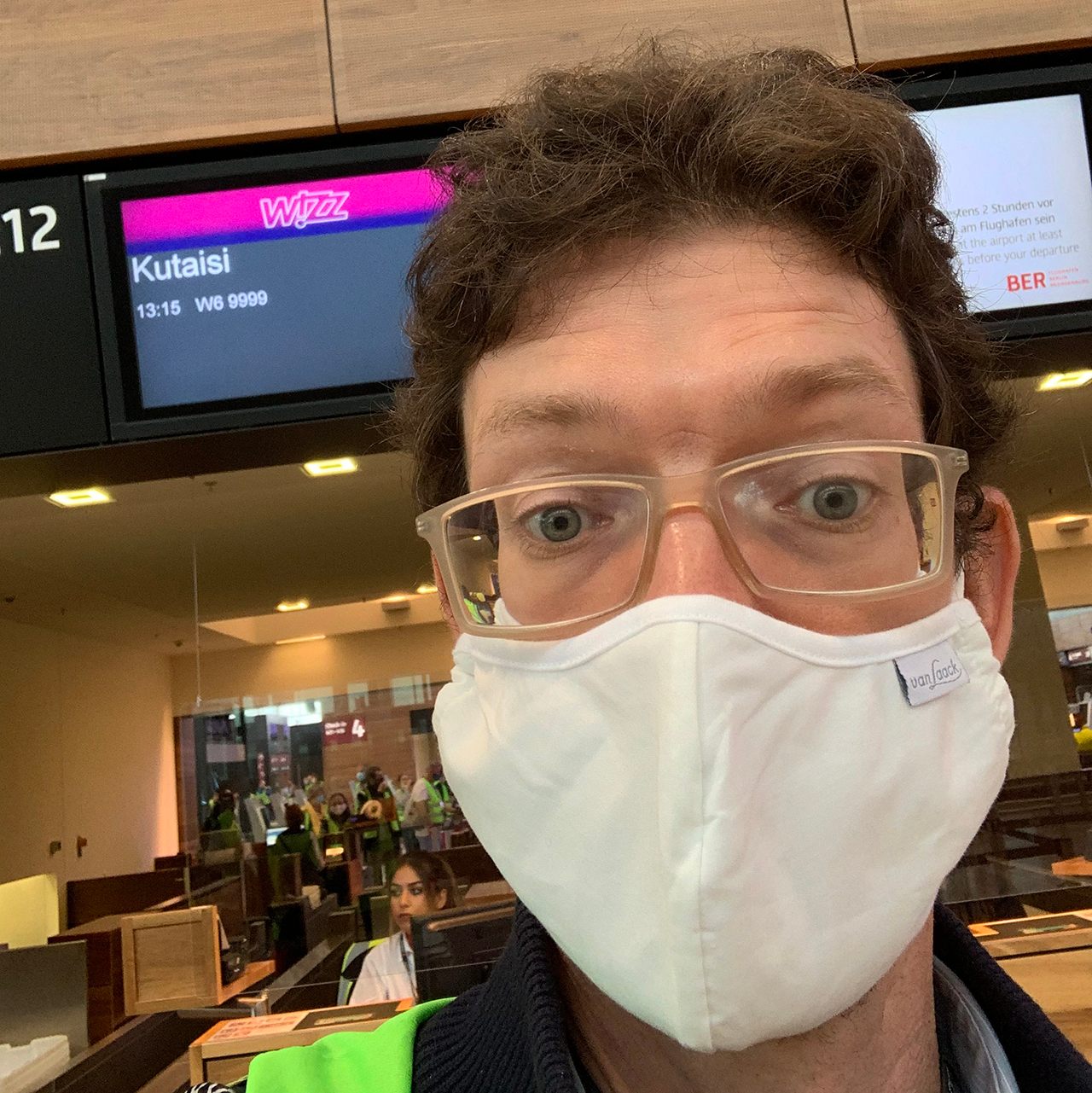
Airport dress rehearsals are an increasingly common practice. New airports don’t open often, but when they do glitches can make international headlines. The cautionary example of London’s Heathrow Airport Terminal 5 looms large: It took the airport years to live down the chaos that followed the high-tech terminal’s 2008 opening, after computer glitches sent more than 23,000 bags astray and resulted in 500 flight cancellations in the space of five days.
With so much on the line, a few dress rehearsals seem like a small investment. When Singapore’s Changi airport opened a new terminal in 2017, authorities invited thousands of people for fire drills and tests of the airport’s baggage handling ahead of time.
For BER officials, the tests were also a way to bring in fresh eyes. “We as airport personnel know the terminal and the technology very well,” says BER spokesman Daniel Tolksdorf. “We wanted to know: Do passengers understand the airport the way we think they do?”
My motivation was simple: How often do you get to try out a brand-new airport before it opens? Sure, the process itself sounded like all the worst parts of travel without the reward of going anywhere. But it would also be a vital public service, in exchange for an insulated coffee mug and a sack lunch.
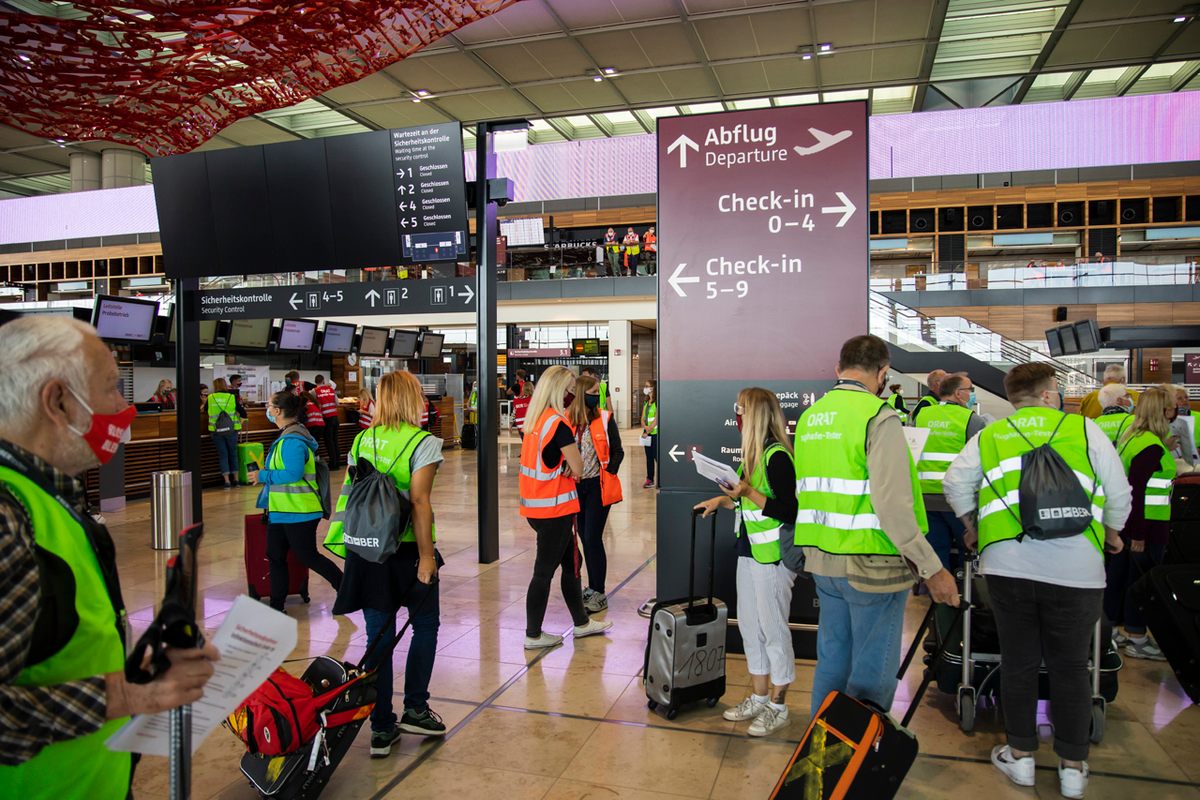
Besides, thanks to the COVID-19 crisis, I hadn’t actually flown anywhere in more than seven months, the longest I had gone without setting foot in an airport since I was a child. Filing into the baggage claim area with the rest of Delta Group, I feel an unexpected stir of excitement. Is it possible, I wonder, to actually miss airports a little bit?
Like most Berliners, I seriously doubted I’d ever be making this trip. BER was supposed to open in June 2012. That spring, the airport even ran passenger tests with volunteers. Police announced highway closures in order to move critical equipment to the new runways. Airlines around the world adjusted their flight schedules to accommodate the German capital’s shiny new facility.
Then fire inspectors arrived, smoke bombs in hand, to test the airport’s unconventional emergency ventilation systems. Designed to suck smoke down underneath the airport to avoid interrupting the terminal’s clean lines with chimneys, the system didn’t work as promised.
That failed inspection was like pulling the proverbial thread: With just weeks to go before opening day, the whole $3 billion sweater began to unravel. Inspectors eventually cataloged more than 14,000 separate fire safety flaws in the airport’s main terminal building. There were 1,000 emergency exit doors with faulty or nonexistent wiring. Seventy percent of the airport’s electric cables were at risk of overheating. Thousands of fire alarms just didn’t work. The airport was 25,000 sprinkler heads short. Hundreds of rooms were improperly numbered or missing entirely on official blueprints. And when 25,000 new sprinklers were added to meet fire codes, someone forgot to calculate the additional water pressure they’d need. More than a mile of new, bigger water pipes had to be retroactively installed.
If this doesn’t sound very German, you’re right—and you’ve probably never lived in Berlin, which has a reputation in Germany for chaos and incompetence that BER only reinforced. Over the last eight years, the terminal’s troubles have provided Germany’s capital and its leaders with steady servings of humiliation, and its taxpayers with a new target for their already renowned black humor:
What do BER and Mars have in common? It’s possible people will first land on both of them 30 years from now.
Wouldn’t it be cheaper to tear down Berlin and rebuild it next to a functioning airport?
Eventually, the seemingly bottomless well of airport fiascoes forced the city’s longtime mayor, Klaus Wowereit, to resign. At one point, local authorities seriously discussed whether tearing the cursed terminal down and starting over would be cheaper than trying to fix its multiplying problems.
Unbelievably, now, in 2020, the saga appears to be reaching its conclusion. The airport is scheduled to open on October 31, 2020. Grabbing a heavy blue suitcase from the arrivals area, I join pretend passengers pushing folding strollers bearing plastic baby dolls and jumbo cardboard boxes marked “Live Animal Inside.” (No animals were harmed—or used at all—in the making of this airport dress rehearsal.) In a masked, jostling herd, we all head eagerly for the two escalators leading up to the terminal’s check-in counters.
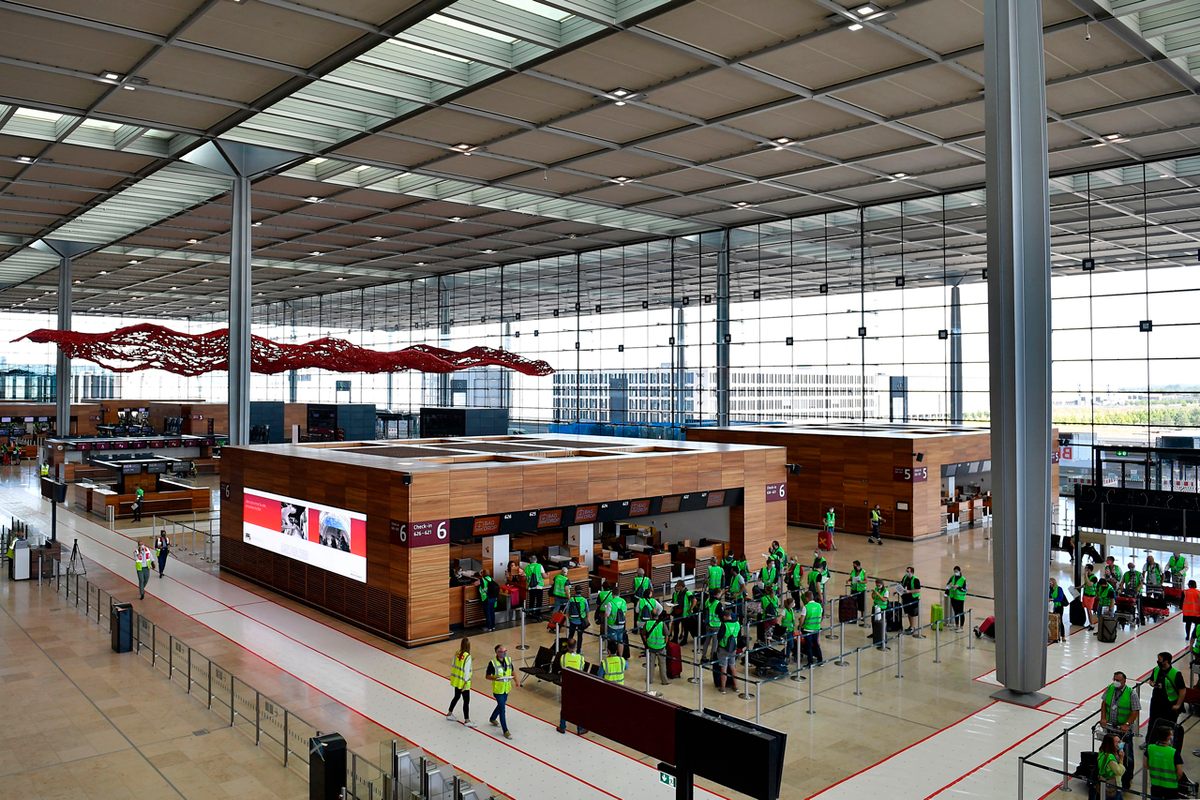
Filled with people, the infamous Terminal 1 doesn’t seem as big as I imagined after seeing it from the outside. but just looking at the departures board filled with fake flights gives me a weird thrill. There are imaginary flights departing for the village of Ilulissat in western Greenland, not to mention make-believe departures for more traditional vacation destinations such as Marseille, Marrakesh, and Mallorca.
As I reach the front of the check-in line, I start to relax. The high-pitched whir of the baggage tag printer, the clack of plastic suitcase wheels on polished marble—it all feels comforting, familiar. Handing my bag to the woman at the check-in counter, I feel a flood of relief when it came in at just under 45 pounds. I wouldn’t have to repack my prop bag to avoid being charged imaginary overweight fees!
Empty-handed, I breeze through security and end up in a long, dead-end hallway with a few dozen other confused passengers. The doors leading to duty free and the gate area are closed, and no one seems to know who’s in charge or how to open them. A steady procession of security guards, heavily armed police, and airport staffers in red vests arrive to peer at the locked door, then leave again.
Soon the line of yellow-vested test passengers stretches all the way down the hall and back into the security area. Not for the last time that day, I feel a familiar, nervous urge to check the time. It’s 11:50 a.m.—I still have more than an hour until my imaginary flight begins boarding.
Finally, someone opens a side door. We all file through an access hallway, past bathrooms and cleaning closets, to emerge in the cavernous departure hall. The duty-free shop is still empty, its shelves awaiting scotch, candy, and perfume.
Scanning their assignment sheets, people scatter in all directions. There’s free coffee on offer and I grab a cup, then hurry through the near-empty halls to my distant gate. As I step on and off moving walkways, I find myself nostalgic for the airports that BER would soon replace. In the 15 years I’ve lived here, this is the fourth Berlin airport I’ve navigated.
That’s a lot of airports for any city. The abundance was once justified by the city’s unique political situation. The oldest was Tempelhof, built by the Nazis, bombed by the Allies, and used to supply West Berlin during the 1948 blockade of the city by Soviet forces. When it closed in 2008, its runways were turned into a massive public park.
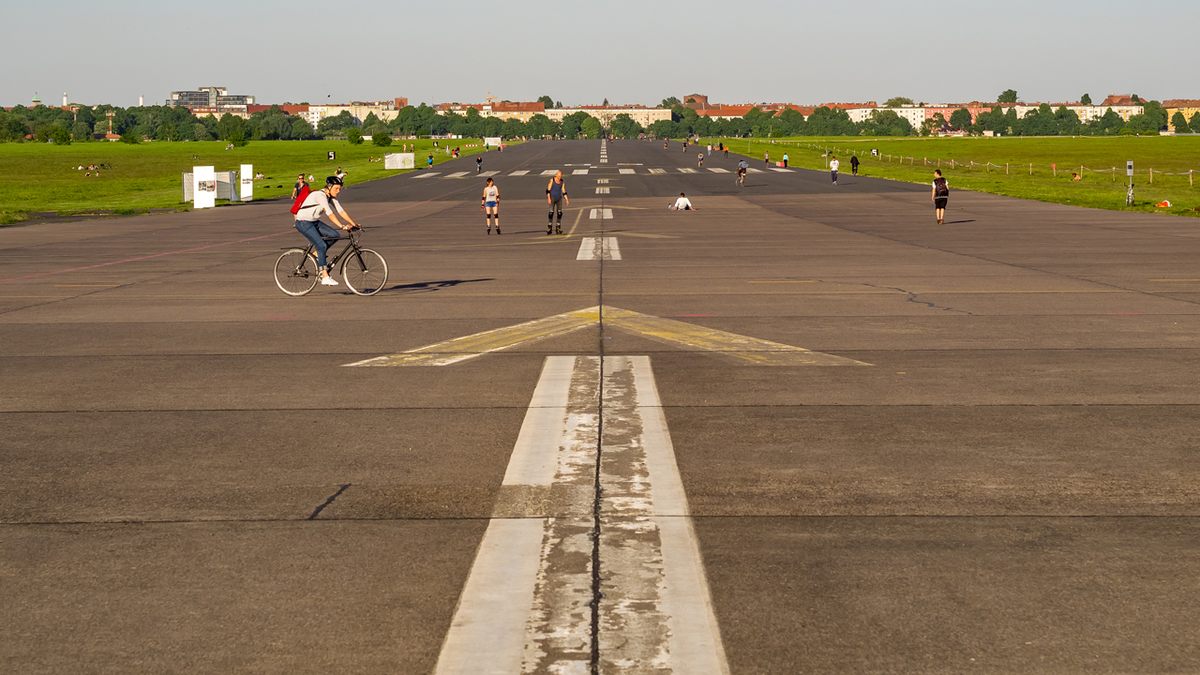
Then there was Tegel, built in the 1970s to serve the western half of the city. Scheduled to go out of service in 2012, Tegel was kept open, crowded far beyond its capacity, during BER’s eight-year renovation saga. Finally, there’s Schoenefeld, the unloved communist-era shed that served the former East Berlin. It, too, will be repurposed after BER opens, probably as a hub for government air travel.
But first, I have to do my part to get BER open, which at this moment means taking my seat in an uncomfortable departure lounge. After a few minutes we’re called to “board.” Instead of buckling up for a flight to western Georgia, I walk across the runway, turn left at an idled Easyjet, and board a white bus. Then I wait.
Eventually, someone carrying a clipboard boards the bus and makes an announcement. “Is everyone here in Delta Group?”
In the seat in front of me, a bearded guy in a Green Bay Packers hat raises his hand. “I’m in Charlie,” he says.
“You’re supposed to be on the other bus. This is the Delta bus.”
“Well, someone could have told me,” he huffs. I am beginning to wonder if they should have scheduled more rehearsals.
The doors close and the driver starts the bus. “Welcome to your flight to Kutaisi!” he says. “We have some time, so now we’re going to take a tour of the runway.” As we slowly drive across the tarmac, he treats us to a highlight reel of airport infrastructure: The second-tallest air traffic control tower in Germany, the green circles designating the locations of underground airplane fuel tanks, the sheds where the snowplows are parked, the de-icing fluid storage tanks.
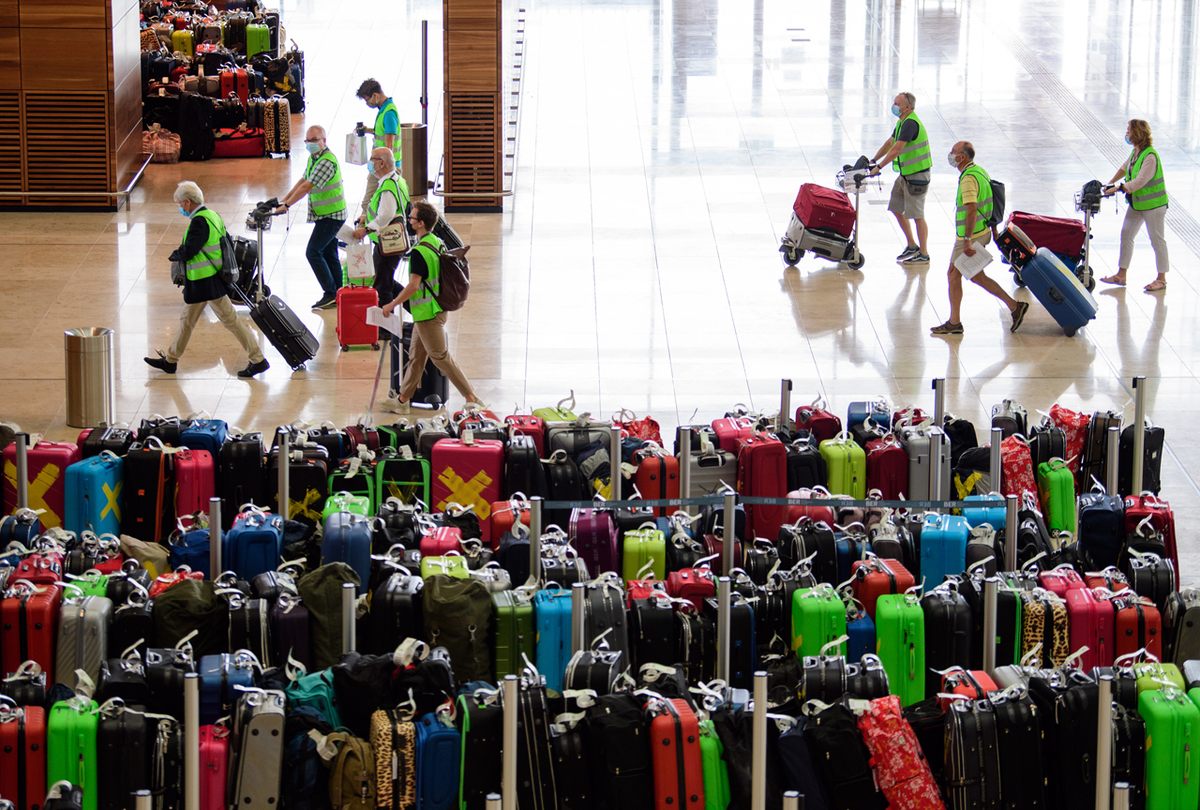
After 10 excruciating minutes we “land” again, filing off the bus and back into the terminal. In minutes, I am back at the luggage carousels. But my heavy blue suitcase isn’t.
Once again, we wait, and within minutes people start to get aggressive. The day’s rehearsal calls for two “flights,” and as the minutes ticked by with no sign of our bags, it was clear we wouldn’t be able to make our connections if we waited much longer. People start really digging into their roles, lining up at the lost baggage desk to file imaginary claims for suitcases they didn’t pack and will never see again.
The hapless employees could only shrug and look helplessly at each other. Finally, an announcement: Delta Group’s bags are all lost. We can proceed to our next flight. Considering today is the final dress rehearsal, I start to get seriously worried.
The spokesperson Tolksdorf told me later that I had a pretty easy day, and that it was all part of the plan. The goal of the ORAT process was to throw the unexpected at airport staff: Lost children, last-minute cancellations, angry passengers, missing tickets, fussy VIPs. For the most part, “There were no real surprises,” he says. A few days after we talk, the opening ceremonies are called off: COVID cases in Berlin are rising sharply, and a big party—even socially distanced in an airy terminal building—would be too big of a risk.

For now, though, I have a flight to catch, this time to Dubrovnik, Croatia. Twenty minutes after checking in I am at passport control, for the second time in less than three hours. As I hand my passport to the customs officer he does a double-take. “Weren’t you just here?”
“Yes, but that time I was headed to Georgia. Now I’m off to to Croatia!” He smiles and waves me through.
It feels good to pretend.











Follow us on Twitter to get the latest on the world's hidden wonders.
Like us on Facebook to get the latest on the world's hidden wonders.
Follow us on Twitter Like us on Facebook